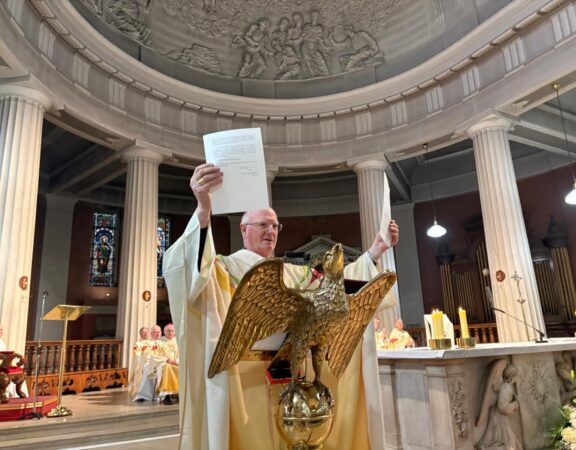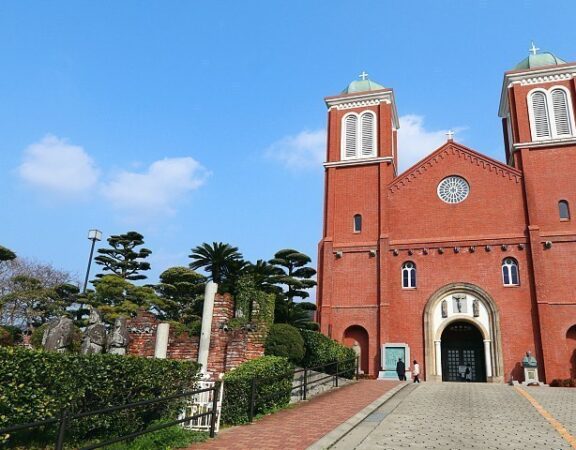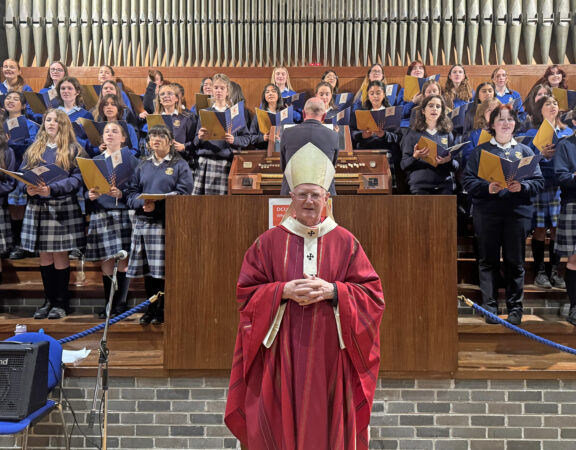Archbishop of Dublin and Primate of Ireland
———–
Pro-Cathedral, Dublin, 1st April 2006
As he grew weaker over the years, there were times when you could see his irritation at the fact that his body was no longer responding to the commands of his brain with the same energy as before. He accepted decreased mobility, but he kept on the move. He showed that even in deepest suffering he still desired to carry out the mission that he had received from the Lord, and to carry it on until the last. He recognised that the Lord had called him to carry out his mission through suffering. His human weakness became then an extraordinary instrument through which he would witness to the strength of the Lord which he allowed to work through him.
This Pope who showed such dynamism was paradoxically slowly struck by a series of illnesses which would touch him first in his movement, then in the very expression of his face, then in the latter days even in his ability to speak. But there was no holding him back in his ministry, even until the Wednesday before he died when against all advice he appeared at his window so as not to leave disappointed a large group of young people gathered in Saint Peter’s Square.
In his homily at the funeral of Pope John Paul II, Cardinal Ratzinger spelt out the manner in which mission and suffering were intertwined in Pope John Paul’s life. “In the first years of his pontificate, still young and full of energy, the Holy Father went to the very ends of the earth, guided by Christ. But afterwards, he increasingly entered into the communion of Christ’s sufferings; increasingly he understood the truth of the words: “Someone else will fasten a belt around you.” And in this very communion with the suffering Lord, tirelessly and with renewed intensity, he proclaimed the Gospel, the mystery of that love which goes to the end (cf. Jn 13:1)”
Anyone who has had even a superficial acquaintance with Pope John Paul knows how much he is a man of prayer. It was obvious in the way he prepared for and celebrated Mass. On his apostolic journeys he would rise to pray in the early hours before a gruelling full day programme. His rosary was always at the ready, in the car, on a helicopter, indeed even as meetings got into their less interesting moments. Pope John Pail II was impatient to be close to the Lord. His entire routine was built around a discipline of prayer.
Pope John Paul II always felt under a very special protection of Mary, the Mother of Jesus. He lived life and his sufferings as another expression of his total dedication, his Totus Tuus.
Returning to that funeral homily, Cardinal Ratzinger said of Pope John Paul that “he found the purest reflection of God’s mercy in the Mother of God. He, who at an early age had lost his own mother, loved his divine mother all the more. He heard the words of the crucified Lord as addressed personally to him: “Behold your Mother.” And so he did as the beloved disciple did: he took her into his own home”. And from the mother he learned to conform himself to Christ.
Pope John Paul set out then a range of perspectives which should guide us on our path of holiness. His ministry was one of provoking all of us, in the Church or outside of it, to ask themselves the question that was proposed in today’s Gospel by the Greeks: “Sir, we would like to see Jesus”. His entire ministry was one in which he served the Lord. I have never encountered another person so focused on his mission of witnessing to Jesus, in such a consistent and untiring way. He was close to Jesus in this life, may he come to our assistance now that he has surely attained the reward of his efforts with the Lord for ever.
In the first years of his pontificate, still young and full of energy, the Holy Father went to the very ends of the earth, guided by Christ. But afterwards, he increasingly entered into the communion of Christ’s sufferings; increasingly he understood the truth of the words: “Someone else will fasten a belt around you.” And in this very communion with the suffering Lord, tirelessly and with renewed intensity, he proclaimed the Gospel, the mystery of that love which goes to the end (cf. 13:1)” Returning to that funeral homily, Cardinal Ratzinger said of Pope John Paul that “he found the purest reflection of God’s mercy in the Mother of God. He, who at an early age had lost his own mother, loved his divine mother all the more. He heard the words of the crucified Lord as addressed personally to him: “Behold your Mother.” And so he did as the beloved disciple did: he took her into his own home”. And from the mother he learned to conform himself to Christ. Pope John Paul set out then a range of perspectives which should guide us on our path of holiness. His ministry was one of provoking all of us, in the Church or outside of it, to ask themselves the question that was proposed in today’s Gospel by the Greeks: “Sir, we would like to see Jesus”. His entire ministry was one in which he served the Lord. I have never encountered another person so focused on his mission of witnessing to Jesus, in such a consistent and untiring way. He was close to Jesus in this life, may he come to our assistance now that he has surely attained the reward of his efforts with the Lord for ever.
Reflection
Archbishop of Dublin and Primate of Ireland
———–
Pro-Cathedral, Dublin, 1st April 2006
I remember his concern for vocations. He regularly visited the Roman Seminary. The number of seminarians increased significantly during his pontificate. Whenever he could he met with groups of seminarians. I pray especially today as Archbishop of Dublin for a renewed response by young people to the call to serve God in the ministerial priesthood or in religious life. The situation is grave. Last year was the first year in history in which we had no priestly ordination for the diocese of Dublin. We need new priests.
Archbishop of Dublin and Primate of Ireland———–Pro-Cathedral, Dublin, 1 April 2006
Archbishop of Dublin and Primate of Ireland———–Pro-Cathedral, Dublin, 1 April 2006







